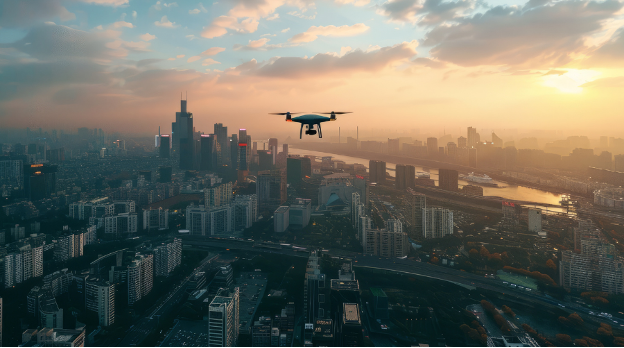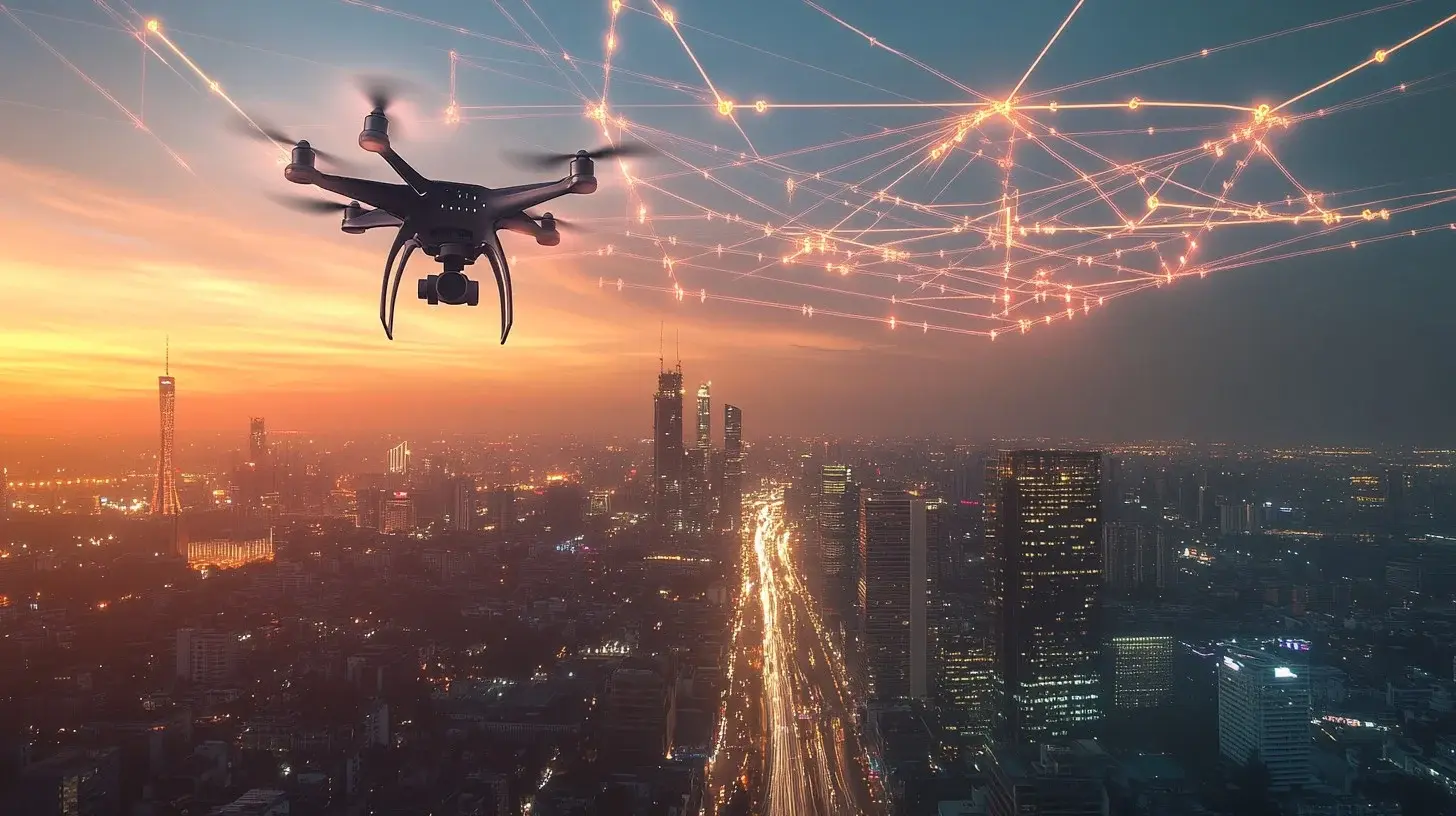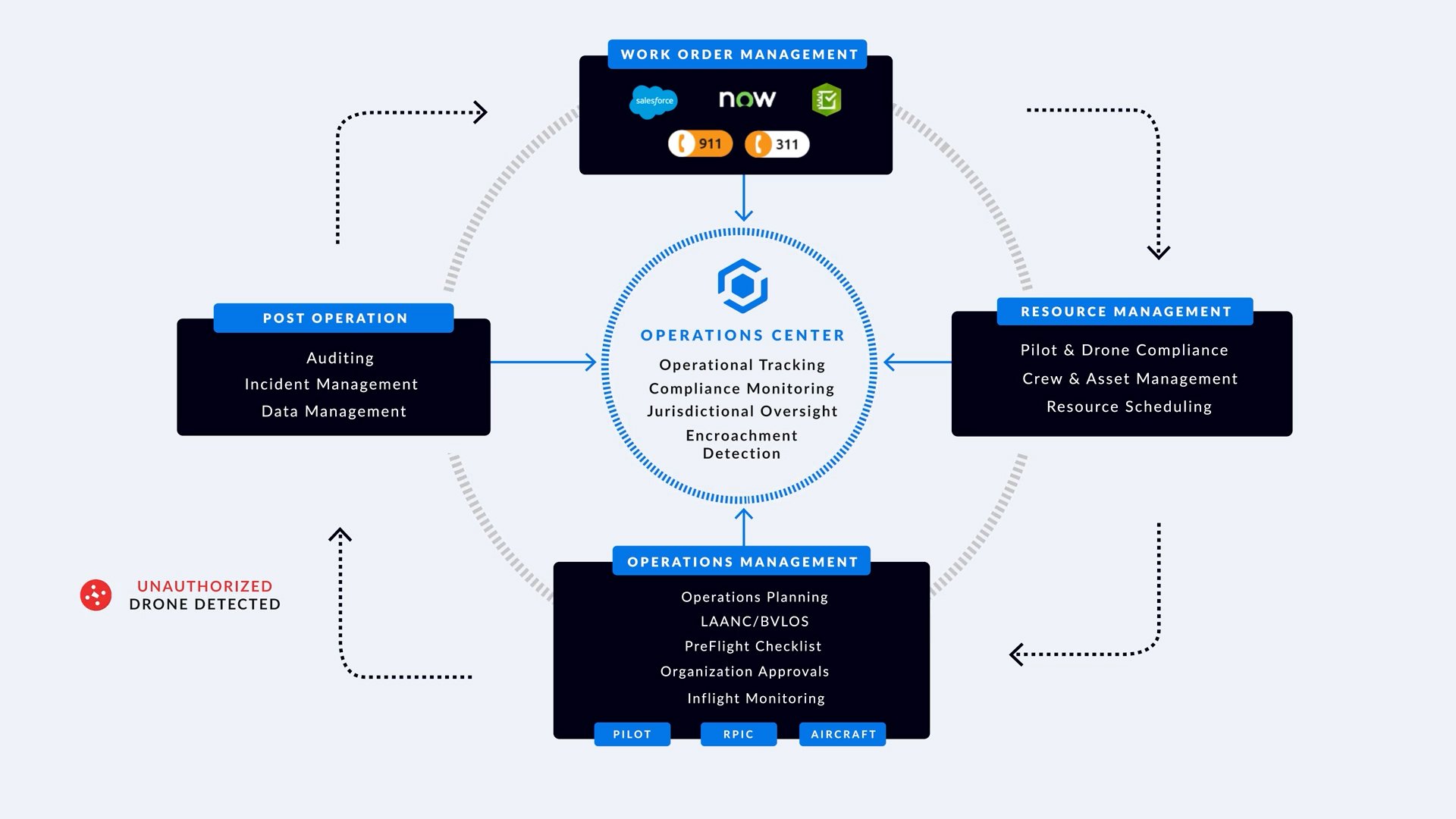What the Administration's Historic Drone Executive Orders Mean for America
On Friday, President Trump signed two executive orders that will fundamentally transform how drones operate in American skies. These aren't...
6 min read
Airspace Link : Jun 18, 2025 12:15:02 PM

Earlier this month, President Trump signed two executive orders that will fundamentally transform the skies above all American cities. Under these presidential directives, rules for routine drone deliveries, automated emergency response, and comprehensive airspace management must be published by February 2026—just eight short months from now—with implementation expected by Spring 2026. This isn't a distant future scenario. It's happening now, and your city needs to be ready.
The first executive order, "Unleashing American Drone Dominance," mandates the Federal Aviation Administration to publish rules that will enable routine Beyond Visual Line of Sight (BVLOS) operations within 240 days, or eight months. This regulatory shift moves the industry from predominantly line-of-sight operations—where pilots must maintain visual contact with their aircraft—to autonomous, long-range missions that can extend miles from the operator. The implications will be impactful and immediate: medical deliveries to underserved communities, automated critical infrastructure inspections, and emergency response capabilities that can deploy faster than ground-based teams.
The second order, "Restoring American Airspace Sovereignty," establishes comprehensive security frameworks for expanded drone operations. It creates federal task forces for counter-drone operations, mandates detection and tracking capabilities for critical infrastructure, and provides state and local agencies access to airspace security technologies and data. This isn't just about managing more aircraft—it's about establishing airspace awareness systems for low-altitude airspace that can distinguish between authorized commercial operations and potential security threats to your community.
These aren't incremental policy adjustments. We're talking about the most aggressive timeline for drone integration in U.S. history. Cities that prepare now will attract new businesses, improve emergency services, and enhance public safety. Those that don’t, risk being left behind in what represents the biggest shift in airspace management since the original invention of aviation in 1903.

The executive orders mandate that drones can soon operate beyond visual line of sight without waiver requirements, meaning companies can automate flights across your city for deliveries, inspections, and emergency response. Simultaneously, new federal requirements demand comprehensive tracking and security systems for all drone activity above critical infrastructure, public events, and government facilities. Do you have infrastructure that will be impacted?
For city leaders, this creates an unprecedented responsibility: you're now responsible for dealing with low-altitude airspace above your community. This includes coordinating delivery drones with police helicopters, ensuring emergency responders can access the airspace instantly, and maintaining security around schools, stadiums, and government buildings.
The economic implications are massive. Cities with efficient drone operation frameworks will attract logistics companies, emergency service providers, and infrastructure inspection firms. Meanwhile, communities without proper systems risk becoming less competitive for business investment and federal funding opportunities.


The next 120 days represent a critical competitive advantage period. Cities that act now to implement a comprehensive drone operations management system will be positioned to capitalize on new opportunities the moment federal rules take effect. Early adopters will attract businesses, create new revenue streams, improve emergency response capabilities, and enhance public services.
Meanwhile, cities that wait until February 2026 will find themselves scrambling to manage an increase in drone activity requests from delivery companies, emergency services, and inspection teams. Without proper coordination systems, they risk operational chaos, safety incidents, and missed economic opportunities.
The global commercial drone market, valued at $30 billion in 2024, is projected to reach $55 billion by 2030—representing one of the fastest-growing technology sectors. For cities, this isn't just about managing more aircraft; it's about positioning your community to capture a significant share of this economic transformation.
The U.S. alone is expected to create over 100,000 new drone-related jobs before the end of 2025, spanning everything from drone operations and maintenance to data analysis and airspace management. Cities that establish comprehensive drone frameworks early will become magnets for these high-tech jobs and the companies that create them.
The cost savings are equally compelling. A recent comprehensive economic analysis in Australia projects $48 billion in cumulative cost savings from 2020 to 2050 from drone adoption across industries like infrastructure inspection, emergency response, and delivery services. For cities, this translates to more efficient public services, reduced operational costs, and enhanced emergency response capabilities.
The security technology market represents another major opportunity. The drone detection market alone is projected to grow from $730 million in 2024 to $3.4 billion by 2030, creating opportunities for cities to not only enhance their security capabilities but also attract security technology companies and federal investment.
These changes unlock entirely new industries for your community. Medical deliveries to underserved neighborhoods become routine. Infrastructure inspections shift from dangerous manual processes to automated, data-rich surveys that prevent failures before they happen. Emergency responders gain aerial situational awareness within minutes of any incident.
The orders also prioritize American-made drone technology, creating opportunities for domestic manufacturers while reducing dependence on foreign suppliers. Cities that establish clear, efficient frameworks will become magnets for drone-related businesses and federal investment, while those without proper systems risk missing out on what represents the largest shift in logistics and public safety operations in decades.

Managing this transformation requires sophisticated drone detection, tracking and identification systems. When delivery drones, emergency response aircraft, and infrastructure inspection operations all need simultaneous access to urban airspace, you need real-time traffic management that can provide automated deconfliction and comprehensive security monitoring.
Airspace Link’s AirHub® Portal is a Drone Operations Management System (DOMS) that provides cities with this exact capability. As the established air traffic control system for drones, we've been building the operational infrastructure these executive orders now mandate. Our platform already manages over 100,000 monthly users across 6,000 unique businesses and government agencies, and growing daily
AirHub® Portal includes an Operation Center that delivers strategic insight and situational awareness into all drone operations above your city. Whether coordinating multiple emergency response teams, monitoring delivery operations, or tracking airspace activity near sensitive facilities, the platform provides everything city leaders need to maintain control and ensure skyway safety.

The window between now and February 2026 determines whether your city becomes a leader in the new drone economy or a follower that will need to get in line due to onboarding bottlenecks and demand going to the early movers. The infrastructure exists, the technology is proven, and the regulatory framework is being finalized. What matters now is action. Start building your city's drone operation capabilities today. The communities that prepare now will reap the benefits of safer skies, enhanced emergency response, improved infrastructure monitoring, and new economic opportunities.
The skyways above your city just changed forever. Make sure your city is ready to manage it and prosper from it.

On Friday, President Trump signed two executive orders that will fundamentally transform how drones operate in American skies. These aren't...

The transformation happening above our cities is both invisible and inevitable. While most residents go about their daily routines, a quiet...
.png)
Last week, our team attended the FAA Drone/AAM Symposium in Baltimore, where we gained valuable insights into the future of Beyond Visual Line of...